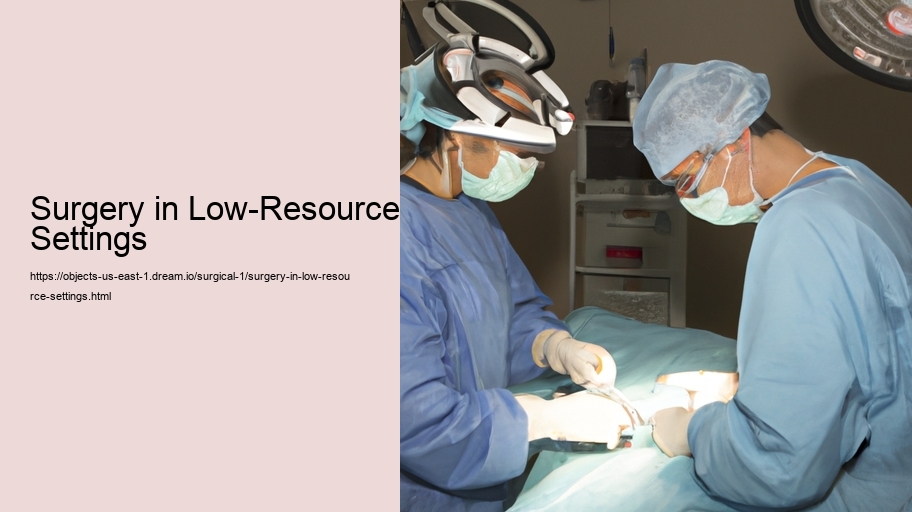Surgery in Low-Resource Settings: Challenges and Innovations
Surgery is a critical component of healthcare that can save lives and improve the quality of life for individuals suffering from a variety of conditions. However, in low-resource settings, the delivery of surgical care faces numerous challenges that stem from a lack of infrastructure, insufficient human resources, inadequate supply chains, and financial constraints. This essay explores the unique difficulties associated with providing surgical care in such environments and the innovative solutions that have been developed to address them.
The landscape of low-resource settings is marked by a scarcity of well-equipped healthcare facilities. Many rural and remote areas have hospitals that lack the essential tools for basic surgical procedures, such as reliable electricity, clean water, and sterilization equipment. The absence of such fundamental resources increases the risk of complications and infections, making surgery a high-stake endeavor for both patients and healthcare providers.
Human resources are another critical challenge in these settings. There is often a shortage of trained surgeons, anesthesiologists, and surgical nurses. The few available professionals can be overwhelmed by the high demand for services, leading to long waiting times for patients and a high burden of untreated surgical conditions. This shortage is exacerbated by the migration of healthcare workers to more affluent areas or countries, in search of better opportunities and working conditions.
The supply chain for surgical materials and pharmaceuticals is another area of concern. In many low-resource settings, the procurement and distribution of medical supplies are hampered by logistical issues, poor road infrastructure, and bureaucratic delays. This can lead to frequent stockouts of critical items such as sutures, gloves, and antibiotics, further complicating the delivery of surgical services.
Financial constraints compound these issues, as many patients cannot afford the cost of surgery or the associated expenses, such as transportation to a distant hospital. In countries without universal healthcare or adequate insurance systems, the financial burden of surgery can be catastrophic for families, leading some to forgo necessary procedures altogether.
Despite these formidable challenges, numerous innovations have emerged to improve surgical care in low-resource settings. One significant development is the adoption of task-sharing strategies, where non-physician healthcare workers are trained to perform certain surgical procedures. This approach has expanded access to surgical care in areas where surgeons are scarce. For example, training programs for non-physician clinicians in Mozambique and other African countries have successfully increased the availability of emergency obstetric surgeries.
Another innovation is the use of portable and solar-powered surgical equipment designed specifically for use in settings without reliable electricity. These technologies enable surgeries to be performed in the most remote locations, bringing life-saving procedures to previously underserved populations.
Telemedicine is also gaining traction as a way to overcome the shortage of specialists. Remote consultations and mentoring through digital platforms allow local healthcare providers to receive guidance from experts around the world, enhancing the quality of care and building local capacity.
Furthermore, international collaborations and partnerships have been crucial in addressing the supply chain issues. Organizations such as Doctors Without Borders and the International Committee of the Red Cross work tirelessly to ensure that essential surgical supplies reach the most remote and conflict-affected regions.
In conclusion, surgery in low-resource settings is fraught with challenges that require a multifaceted approach to overcome. Innovations in training, technology, and international collaboration are proving to be valuable in bridging the gap in surgical care. While there is still much work to be done, these advancements offer hope that safe and effective surgical care can become accessible to all, regardless of where they live. The resilience and creativity of healthcare workers in these settings continue to inspire and drive progress towards a more equitable global health landscape.
